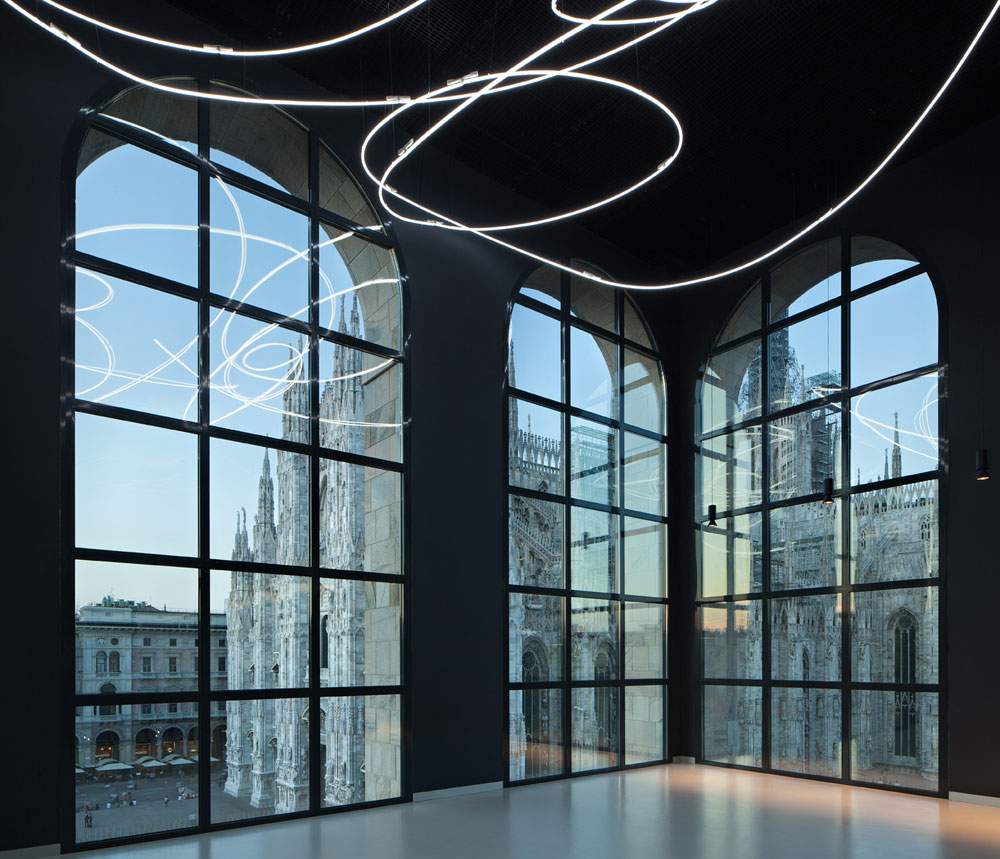Milan, the Museo del Novecento reopens with never-before-exhibited masterpieces and novel juxtapositions
The Museum of the Twentieth Century in Milan will reopen, when epidemiological conditions permit, with new itineraries, never-before-exhibited masterpieces and never-before-seen juxtapositions in its renovated spaces. A new narrative of art from the 1920s to the 1950s, through a reading that interweaves the chronological criterion with a critical-thematic interpretation.
In addition to works from the extensive civic heritage, masterpieces from foundations, archives and private collectors with whom the museum has established significant collaborations in recent years will be on display.
The exhibition itinerary thus proposes a new interpretation of the central decades of the twentieth century: the art of the century will be presented following a thematic-chronological criterion and combining a rigorous philological approach with a narrative with a different listening rhythm and pace.
It begins with in-depth looks at particularly significant cross-cutting themes in the art of the short century addressed in the more collected rooms: Metaphysics, read through the lens of the magazine Valori Plastici; the return to order and figure painting of the 1920s and 1930s; and the theme of primitivism from the Historic Avant-Garde onward.
In the large, light-filled spaces on the fourth floor, we traverse the period from the “timeless, tragic art of fascism” to abstractionism. From the monumental works of Sironi, Martini and Carrà, we move on to the more “loose” and chromatically lit painting of de Chirico, De Pisis, Birolli and Casorati. The representation of the two artistic scenarios of the 1920s and 1930s in Italy is significantly interrupted by a valuable monograph devoted to Giorgio Morandi, an undisputed master of the twentieth century who can hardly be ascribed to a current or group. The last part from the long room is devoted to abstractionisms: from Melotti’s “harmonic” sculpture in dialogue with Kandinsky and Klee we move on to the painters who revolved around the Galleria del Milione.
Having passed through the Marino Marini rooms, inaugurated in 2019, and the large space dedicated to Lucio Fontana, the centerpiece of the museum venue, the new itinerary resumes in the long room on the fifth floor with the Second Postwar period. It still alternates between personal rooms dedicated to Manzoni and Burri, and context. The cultural climate of the immediate post-World War II period is described through an interesting comparison of artists who, with very different languages, responded to the urgency of a new society: the dreamlike figuration of Licini and the mechanomorphic suggestions of Magnelli, the militant abstractionism of Accardi and Vedova, the Realism of Guttuso and Birolli, and the Picassian revisitation “Beyond Guernica” of Morlotti and Afro. It closes with “New Ways of Abstraction”: through large-format works, the bold experiments in abstraction of the 1950s and 1960s are addressed, with works by artists such as Pomodoro, Consagra, Capogrossi, Kounellis and Novelli.
The collection on display has been renewed with works from storage and enriched with masterpieces from private collectors and foundations and archives.
To Burri, thanks to a three-year loan with the Fondazione Palazzo Albizzini Collezione Burri, a personal room has been dedicated where it is possible to retrace the artist’s work in all its phases, admiring in particular his innovative approach to matter and putting him in dialogue with Lucio Fontana. Alongside the small painting Mold of 1952, owned by the museum, five masterpieces will be on display: Combustion 14 of 1957, Ferro SP2 of 1958-59, Rosso Plastica of 1961, Cellotex of 1974 and Cretto Nero e Oro of 1994, as well as the sketch for the work Lo strappo, of 1952, owned by the Lucio Fontana Foundation and purchased by the artist himself at the Venice Biennale of the same year.
For the first time, the Museo del Novecento sees the presence of Arnaldo Pomodoro: exhibited are La colonna del viaggiatore from 1959 and Sfera No. 5 from 1965, thanks to a five-year loan from the Arnaldo Pomodoro Foundation.
The beginning of the collaboration with the Fondazione Emilio and Annabianca Vedova also made it possible to exhibit two fundamental works by the master: The Fight of 1949 and Revolt (Inferno) of 1951, works of enormous historical-critical value. This triggers an important dialogue between Vedova and other protagonists of his time such as Accardi and Licini.
In addition to the major foundations, archives and private collectors have shown trust in the museum with long-term donations and loans. It has thus been possible to introduce masterpieces that encourage curious aesthetic comparisons and refined art-historical interpretations, thanks to the contributions of Archivio Birolli, Claudia and Enrico Consolandi, Cosetta Dal Cin, Renzo Limana, Patrizia Pizzinato, Loredana Vaccari and Rizzardo Rizzardi.
After the spaces dedicated to art between the 1960s and the early 1980s, the first stage of the New Paths rearranged in 2019, the visit concludes with images from The Courts of the Twentieth Century in the new video room. Ten scholars narrate, in short films made by Storyville, a work, a “junction” or a theme of the museum itinerary, creating interdisciplinary relationships, novel connections and original interpretations.
By 2021, the museum will complete a new Futurism room. Also in the works is a study to double the Milanese museum venue by creating a large exhibition complex that will include the second tower of the Arengario.
For more info: www.museodelnovecento.org
Pictured is the Fontana Room of the Museo del Novecento.
 |
| Milan, the Museo del Novecento reopens with never-before-exhibited masterpieces and novel juxtapositions |
Warning: the translation into English of the original Italian article was created using automatic tools. We undertake to review all articles, but we do not guarantee the total absence of inaccuracies in the translation due to the program. You can find the original by clicking on the ITA button. If you find any mistake,please contact us.




























